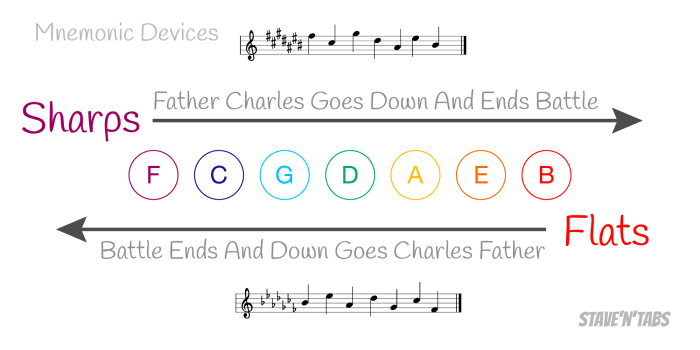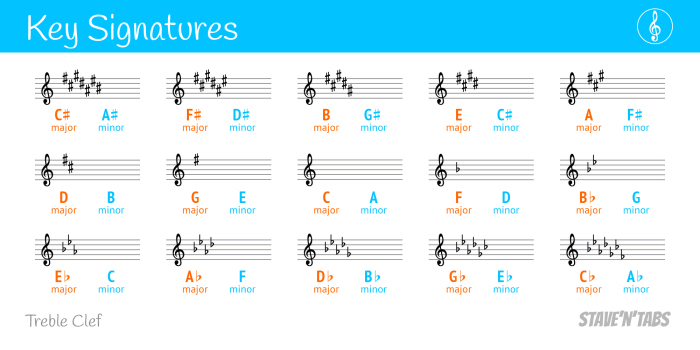Embark on a musical journey as we delve into the fascinating world of solfege with sharps and flats. These musical symbols hold the power to transform melodies and harmonies, adding depth and complexity to the tapestry of sound.
From understanding the concept of sharps and flats to exploring their impact on solfege syllables, we’ll uncover the secrets of using these musical tools to elevate your musicality.
Sharps and Flats in Solfege

In solfege, sharps and flats are musical symbols that modify the pitch of a note. A sharp (#) raises the pitch of a note by a half step, while a flat (b) lowers the pitch by a half step.
In the realm of solfege, where sharps and flats dance upon the musical staff, one may find themselves seeking deeper insights. For those curious minds, questions for thank you ma’am await. From unraveling the mysteries of key signatures to navigating the intricacies of chromatic alterations, solfege with sharps and flats offers a captivating journey into the heart of musical theory.
Examples of Sharps and Flats in Solfege Notation
Here are some examples of sharps and flats in solfege notation:
- C# (C sharp) is a half step higher than C.
- D♭ (D flat) is a half step lower than D.
- F# (F sharp) is a half step higher than F.
- G♭ (G flat) is a half step lower than G.
Difference Between a Sharp and a Flat
The difference between a sharp and a flat is that a sharp raises the pitch of a note, while a flat lowers the pitch of a note. For example, C# is a half step higher than C, while C♭ is a half step lower than C.
Solfege Syllables with Sharps and Flats

Solfege is a system of musical notation that uses syllables to represent the notes of a scale. When sharps or flats are added to a scale, the solfege syllables are also affected.
Identifying Affected Syllables
The solfege syllables that are affected by sharps and flats are: fa, ti, and do.
- Fabecomes fiwhen it is raised by a sharp.
- Tibecomes tewhen it is raised by a sharp.
- Dobecomes diwhen it is lowered by a flat.
Table of Solfege Syllables with Sharps and Flats
| Note | Solfege Syllable | Sharp | Flat |
|---|---|---|---|
| C | do | di | – |
| D | re | ri | – |
| E | mi | – | me |
| F | fa | fi | – |
| G | sol | – | se |
| A | la | li | – |
| B | ti | te | – |
Singing Solfege with Sharps and Flats
When singing solfege with sharps and flats, it is important to remember the following rules:
- Sharps raise the pitch of a note by one half step.
- Flats lower the pitch of a note by one half step.
- The solfege syllable for a note with a sharp is the same as the solfege syllable for the note one half step above it.
- The solfege syllable for a note with a flat is the same as the solfege syllable for the note one half step below it.
Using Sharps and Flats in Music: Solfege With Sharps And Flats

Sharps and flats play a crucial role in music by altering the pitch of notes, leading to the creation of melodies and harmonies that convey a wide range of emotions.
Examples of Sharps and Flats in Music
- In the key of C major, adding a sharp (#) to the note F raises its pitch by a semitone, creating F#. This alteration allows for the creation of melodies that extend beyond the diatonic scale.
- In the key of D minor, adding a flat (b) to the note B lowers its pitch by a semitone, creating Bb. This adjustment creates a darker, more somber sound, suitable for conveying emotions of sadness or longing.
The Role of Sharps and Flats in Creating Melodies and Harmonies
Sharps and flats enable composers to expand the melodic and harmonic possibilities of music. By altering the pitch of notes, they create intervals and chords that would not be possible within the diatonic scale alone.
- In a melody, sharps and flats can create tension and resolution. For instance, a melody that ascends to a sharpened note and then descends to the original note creates a sense of anticipation and release.
- In harmony, sharps and flats allow for the construction of complex chords with richer and more nuanced sounds. For example, the addition of a sharp to the fifth note of a major chord creates a dominant seventh chord, which conveys a sense of instability and forward motion.
How Sharps and Flats Affect the Mood and Feel of Music
Sharps and flats have a significant impact on the mood and feel of music. Sharpened notes tend to create a brighter, more energetic sound, while flattened notes convey a darker, more somber tone.
- Major keys with sharps, such as C# major or G# major, often evoke feelings of joy, optimism, and triumph.
- Minor keys with flats, such as Eb minor or Bb minor, typically create a sense of sadness, melancholy, or introspection.
Practice Exercises for Solfege with Sharps and Flats

Engaging in practice exercises is crucial for mastering solfege with sharps and flats. These exercises aim to enhance your singing, ear training, and written notation skills.
Consistency and dedication are key when practicing solfege. Regular practice sessions, even for short durations, can significantly improve your proficiency.
Singing Exercises, Solfege with sharps and flats
- Sing scales:Practice singing major and minor scales with sharps and flats to familiarize yourself with their sound and patterns.
- Sing intervals:Sing intervals (e.g., thirds, fifths, octaves) using solfege syllables, incorporating sharps and flats to challenge your intonation.
- Sing melodies:Select melodies that include sharps and flats and practice singing them accurately, paying attention to the altered pitches.
Ear Training Exercises
- Identify intervals:Listen to intervals played on an instrument or sung and identify their solfege names, including those with sharps and flats.
- Recognize melodies:Listen to melodies with sharps and flats and try to sing them back or identify the solfege syllables used.
- Dictation:Transcribe melodies with sharps and flats into solfege notation, training your ear to recognize and write altered pitches.
Written Notation Exercises
- Write scales:Write out major and minor scales with sharps and flats in solfege notation, reinforcing their patterns and intervals.
- Analyze melodies:Analyze melodies that include sharps and flats, identifying the key signature, altered pitches, and solfege syllables used.
- Create melodies:Compose melodies that incorporate sharps and flats, practicing your understanding of their usage and effects.
Questions Often Asked
What is the difference between a sharp and a flat?
A sharp raises a note by a semitone, while a flat lowers it by a semitone.
How do I sing solfege with sharps and flats?
When you encounter a sharp, raise the solfege syllable by a semitone. When you encounter a flat, lower the solfege syllable by a semitone.
What are some examples of how sharps and flats are used in music?
Sharps and flats are used to create melodies, harmonies, and scales. They can also be used to modulate to different keys.
